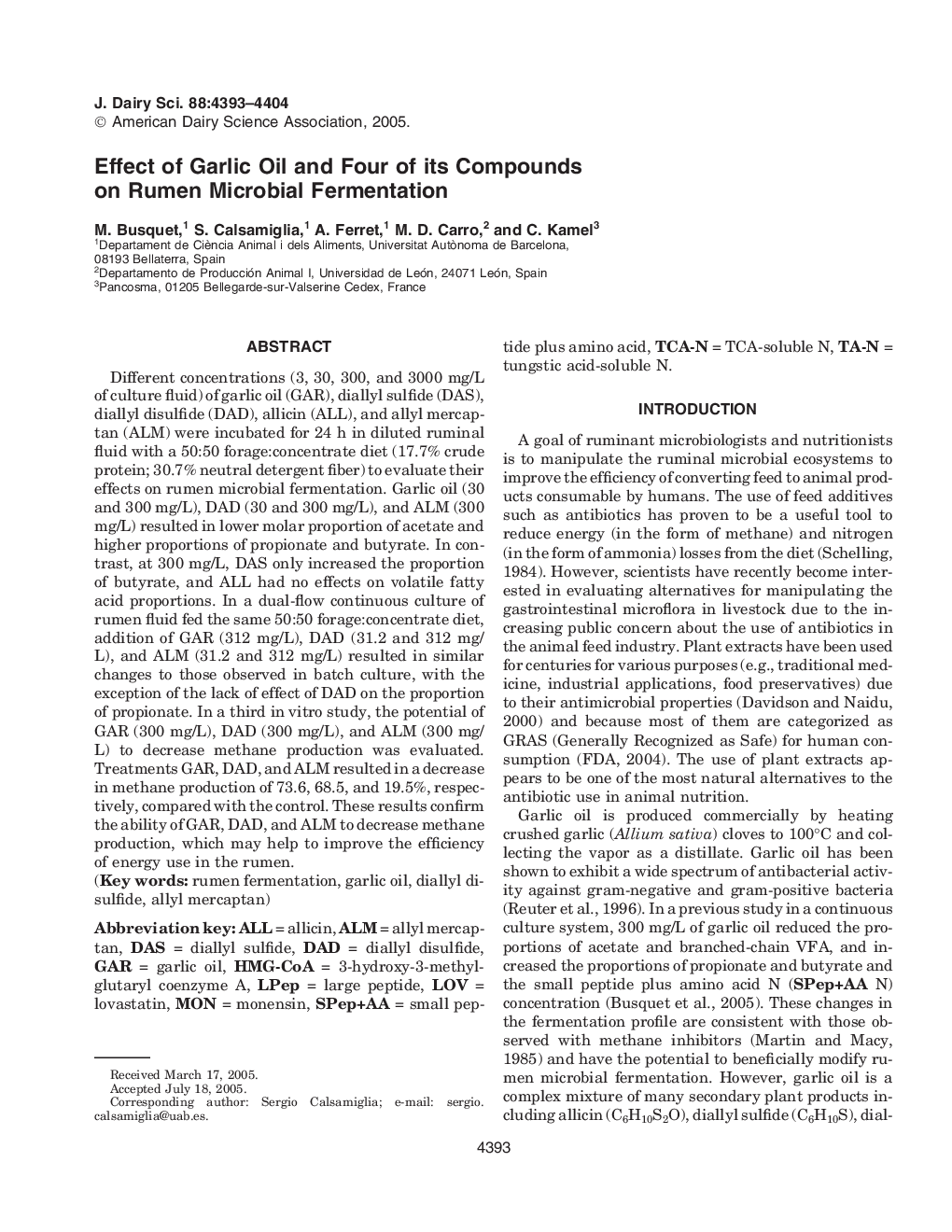| Article ID | Journal | Published Year | Pages | File Type |
|---|---|---|---|---|
| 2441682 | Journal of Dairy Science | 2005 | 12 Pages |
Different concentrations (3, 30, 300, and 3000 mg/L of culture fluid) of garlic oil (GAR), diallyl sulfide (DAS), diallyl disulfide (DAD), allicin (ALL), and allyl mercaptan (ALM) were incubated for 24 h in diluted ruminal fluid with a 50:50 forage:concentrate diet (17.7% crude protein; 30.7% neutral detergent fiber) to evaluate their effects on rumen microbial fermentation. Garlic oil (30 and 300 mg/L), DAD (30 and 300 mg/L), and ALM (300 mg/L) resulted in lower molar proportion of acetate and higher proportions of propionate and butyrate. In contrast, at 300 mg/L, DAS only increased the proportion of butyrate, and ALL had no effects on volatile fatty acid proportions. In a dual-flow continuous culture of rumen fluid fed the same 50:50 forage:concentrate diet, addition of GAR (312 mg/L), DAD (31.2 and 312 mg/L), and ALM (31.2 and 312 mg/L) resulted in similar changes to those observed in batch culture, with the exception of the lack of effect of DAD on the proportion of propionate. In a third in vitro study, the potential of GAR (300 mg/L), DAD (300 mg/L), and ALM (300 mg/L) to decrease methane production was evaluated. Treatments GAR, DAD, and ALM resulted in a decrease in methane production of 73.6, 68.5, and 19.5%, respectively, compared with the control. These results confirm the ability of GAR, DAD, and ALM to decrease methane production, which may help to improve the efficiency of energy use in the rumen.
